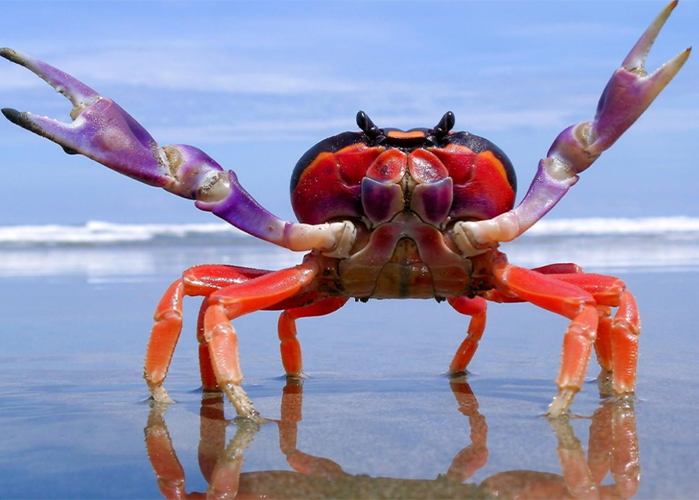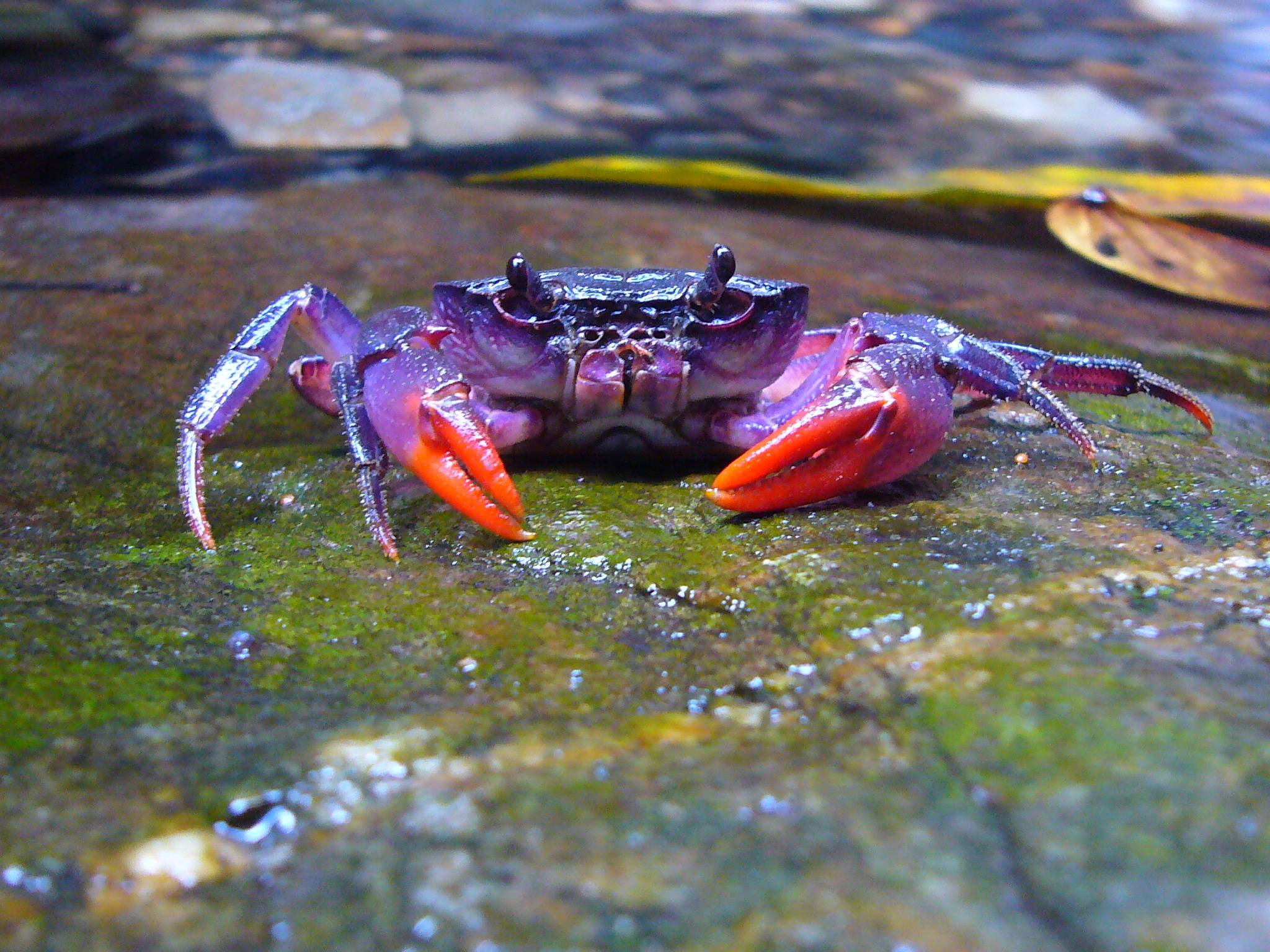Halloween crabs are nicknamed so because of their brilliant colors — they have a tar-black carapace, blood-orange legs and purple claws, with a pair of yellow spots behind the eyes. They are land crabs in little technicolor dreamcoats. They measure around 2 inches across the carapace and 4 inches from claw to claw, but they have an adorable way of making themselves bigger when you near them, putting up their claws as if to say “It wasn’t me!” while they scuttle away.

Despite the fact that they were first described and named in 1853, there isn’t a whole lot of information readily available online about these crabs. What we do know is this: they’re found in neotropical coastal rain forests, along the west coast of Central America from Mexico to Ecuador. They’re burrowers, living on land, and they’re nocturnally active, which explains why we saw so many of them just before daybreak.
But even though they’re well-adjusted terrestrial crabs, th ey still live close enough to the water to migrate there for reproduction. During the long dry season of November to April, they’ll go underground, and then re-emerge on the first rainfall, signaling the start of the green season. For Halloween crabs, spring break is a wet one.
ey still live close enough to the water to migrate there for reproduction. During the long dry season of November to April, they’ll go underground, and then re-emerge on the first rainfall, signaling the start of the green season. For Halloween crabs, spring break is a wet one.

Thousands of Halloween crabs will appear on the beach to spawn, which one PhD student studying the crab described as “a big pulse of biomass into the ocean all at one time.”
 Hatched larvae go through successive development stages in or near the water, then move to land as juvenile crabs, where they will spend most their adult lives (which can be up to 10 years long).
Hatched larvae go through successive development stages in or near the water, then move to land as juvenile crabs, where they will spend most their adult lives (which can be up to 10 years long).

,%20captive-0521%20med%20res.jpg)





